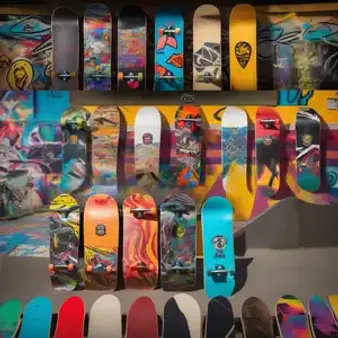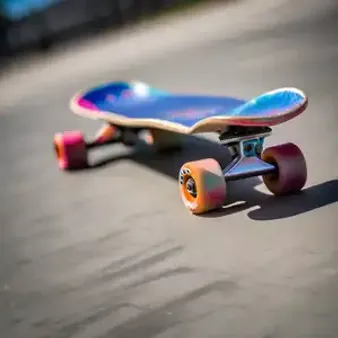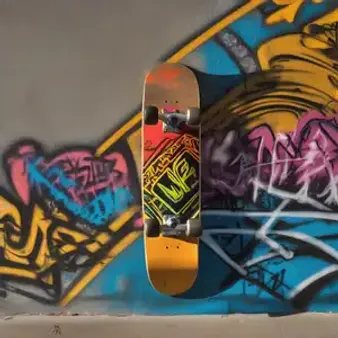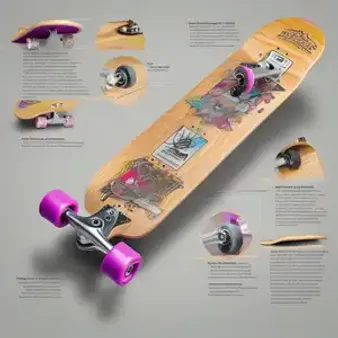Table of Contents
Picking up skateboarding? Choosing the right skateboard board is crucial for a fun and successful experience. With countless options available, it can feel overwhelming, especially for beginners. That's where kizworld comes in! This guide breaks down everything you need to know about the best skateboard boards, whether you're just starting out or you're a seasoned pro looking to upgrade.
Type of Rider | Board Size | Features to Consider |
|---|---|---|
Beginner (Kids & Teens) | 7.5" - 8" | Durable construction, softer wheels, basic components |
Beginner (Adults) | 8" - 8.25" | Sturdy deck, smooth-rolling wheels, comfortable trucks |
Intermediate/Advanced | 8.25" and up | Specific shapes (e.g., popsicle, cruiser), high-quality trucks and wheels, personalized setups |
Choosing the Best Skateboard Board for You
Picking the right skateboard board is like choosing the right pair of shoes – it needs to fit you just right! A board that's too big or too small can make learning and progressing way harder. Think about your shoe size – if you wear a size 6, you wouldn't want to try skating in a size 12, right? It's the same with skateboards!
Why Size Matters
The size of your skateboard board is super important, especially if you're just starting out. You'll want a board that's easy to control and maneuver. Imagine trying to steer a giant pirate ship – that's how it would feel trying to learn on a board that's too big! On the other hand, a board that's too small can be tough to balance on, like trying to stand on a rolling pin. Not easy! A good rule of thumb for beginners is to start with a board that's around 7.5 to 8.25 inches wide. This size range offers a nice balance of stability and control, making it easier to learn the basics.
Finding Your Perfect Fit
The best way to find your perfect fit is to actually stand on a few different boards at a skate shop. It's like trying on shoes – you gotta see what feels best! Pay attention to how comfortable the width feels under your feet. You want enough space to move around without feeling cramped, but not so much space that it feels awkward to control. Don't be afraid to ask the staff at the skate shop for help – they're experts at finding the right board for every skill level. They can give you personalized recommendations based on your height, weight, and what you want to do with your board, whether it's cruising around the neighborhood or hitting the skatepark.
Board Size | Rider Height |
|---|---|
7.5" - 8" | Under 5'5" |
8" - 8.25" | 5'5" - 5'10" |
8.25" and up | Over 5'10" |
Choosing the Best Skateboard Board for You
Best Skateboard Boards for Beginners
Starting out on your skateboard journey? You'll want a board that's your perfect sidekick! For new skaters, it's all about finding a board that's stable and easy to control. Think of it like learning to ride a bike – you wouldn't start on a unicycle, right? Most beginners go for boards between 7.5 and 8.25 inches wide. These boards give you a good mix of balance and make learning tricks like ollies (jumping with your board) way easier. It's like finding the Goldilocks of skateboards – not too big, not too small, just right! Check out our guide on how to get started with skateboarding for more tips.
Board Part | What to Look For |
|---|---|
Deck | Sturdy, 7-ply maple construction |
Trucks | Durable, responsive for turning |
Wheels | Softer wheels (90A-98A) for a smooth ride |
Best Skateboard Boards for Beginners
Best Skateboard Boards for Experienced Riders
Alright, so you've graduated from the bunny slopes of skateboarding – awesome! Now you're ready to tackle bigger ramps, master gnarly tricks, and maybe even design your own custom setup. Choosing the right board is crucial for experienced riders like you. It's like leveling up in a video game – you need gear that can handle your skills!
Experienced riders often prefer boards with a bit more personality. Think of it like choosing a magic wand – you want one that reflects your unique style! You might go for a wider deck (8.25 inches or more) for more foot space and stability, especially if you're into vert skating (riding ramps). Or maybe you want a deck with a steeper concave (the curve of the board), which gives you more leverage for popping those ollies sky-high. It's all about finding what feels right for you and the tricks you want to conquer. To learn more about this, you can read about how to choose the right skateboard for your needs.
Fine-Tuning Your Ride
Here's where it gets really fun – customizing! Experienced skaters often fine-tune their boards to match their riding style. It's like tweaking your go-kart for maximum speed and handling! You can swap out trucks (the metal parts that connect the wheels to the deck) for a different turning radius or experiment with different wheel hardnesses for the perfect blend of grip and speed. Softer wheels (around 90A) are great for street skating, while harder wheels (100A or higher) are better for parks and ramps. Think of it like choosing tires for your bike – different terrains call for different treads!
Decks for Every Style
Remember, your skateboard is an extension of your creativity! Don't be afraid to experiment and find what works best for you. You can also read more about the best skateboarding boards and trucks to use. After all, the more you ride, the more you'll discover your own unique style!
Skateboarding Term | Meaning |
|---|---|
Ollie | The basic jump trick in skateboarding |
Concave | The curve of the skateboard deck |
Trucks | The metal parts that connect wheels to the deck |
Durometer (A) | Measures wheel hardness (higher number=harder wheel) |
Best Skateboard Boards for Experienced Riders
Understanding Skateboard Board Components
So, you're ready to shred, but first, let's break down the anatomy of your skateboard board. Think of it like learning about the engine of your awesome, new go-kart! Each part plays a crucial role in how your board performs and feels.
Deck Decoded
The deck is the flat, wooden part you stand on – it's like the skateboard's body! Decks come in different shapes and sizes, each designed for a specific style of riding. Imagine the difference between a surfboard and a wakeboard – they're both boards, but built for different water adventures. Check out how to choose the right skateboard that fits your style. Skateboard decks are usually made of maple wood, glued together in layers. More layers mean more strength and durability, which is important for handling those gnarly landings! Beginners usually start with a basic popsicle-shaped deck – it's the most versatile and great for learning tricks.
Deck Shape | Riding Style |
|---|---|
Popsicle | All-around, street, park |
Cruiser | Cruising, carving, transportation |
Longboard | Downhill, cruising, transportation |
Trucks: Your Turning Point
Trucks are the metal parts that attach the wheels to the deck and allow you to steer. They're like the steering wheel of your skateboard! Trucks come in different sizes to match your deck width – it's important to get the right fit for optimal control. Imagine trying to steer a car with a tiny steering wheel – not easy, right? Trucks also have bushings, which are little rubber cushions that affect how your board turns. Stiffer bushings mean sharper turns, while softer bushings make for a smoother ride. Experiment with different bushing hardnesses to find what you like best. You can also read more on how to get started with skateboarding. It's all about finding your perfect turning radius!
- Skate Tony Hawk
- Wknd Skateboards
- Skateboard Shop Dubai
Understanding Skateboard Board Components
Final Thought
Choosing the best skateboard board is a personal journey. What matters most is finding a board that suits your individual style, skill level, and preferences. Remember, the right board can make all the difference in your skateboarding journey, so take your time, do your research, and most importantly – have fun!